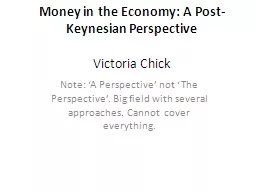PPT-THE POST-TROIKA PORTUGUESE ECONOMY
Author : pasty-toler | Published Date : 2016-07-31
L U Í S M I RA A M A R A L Invited Full Professor of Economics and Management IST Lisbon University Chief Executive Officer of Banco BIC Português Cascais
Presentation Embed Code
Download Presentation
Download Presentation The PPT/PDF document "THE POST-TROIKA PORTUGUESE ECONOMY" is the property of its rightful owner. Permission is granted to download and print the materials on this website for personal, non-commercial use only, and to display it on your personal computer provided you do not modify the materials and that you retain all copyright notices contained in the materials. By downloading content from our website, you accept the terms of this agreement.
THE POST-TROIKA PORTUGUESE ECONOMY: Transcript
Download Rules Of Document
"THE POST-TROIKA PORTUGUESE ECONOMY"The content belongs to its owner. You may download and print it for personal use, without modification, and keep all copyright notices. By downloading, you agree to these terms.
Related Documents













![[DOWNLOAD] My First 100 Words Portuguese English | Bilingual Picture Dictionary For Kids](https://thumbs.docslides.com/1008411/download-my-first-100-words-portuguese-english-bilingual-picture-dictionary-for-kids-dicion-rio-ilustrado-portugu-s-ingl-s-para-crian-as-learn-brazilian-portuguese-portuguese-childrens-books.jpg)
